Portrait of a Cruiser – Ivar Smits & Floris van Hees
Ivar and Floris’ gave up busy jobs to circumnavigate with Sustainability being their main goal. They are keen to learn from others worldwide and research and visit as many projects in the countries en route, to take home positive ideas for today’s and tomorrow’s generations.
Published 6 years ago, updated 1 month ago
Names of Owners (and crew): Ivar Smits (1974) & Floris van Hees (1978)
Nationality: Dutch
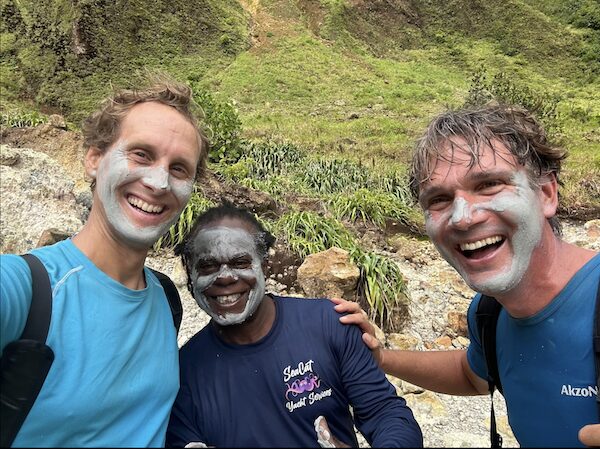

Boat Name: Lucipara 2.
We are often asked where the name “Lucipara” comes from. Its origin lies in the Banda Sea, Indonesia. The Lucipara islands form part of the Moluccas (Maluku) archipelago and it is where the Dutch steamer “Willem I” shipwrecked in 1837. On board was the governor of the Moluccas, Mr de Stuers with his pregnant wife and children. All 140 passengers and crew found refuge on the tiny Lucipara islands. They had to wait 37 days to be rescued, during which they had to overcome a lack of drinking water, food and shelter.
Everyone survived and shortly after being rescued, Mrs de Stuers gave birth to a daughter, Cornelia Govertha Elisa Lucipara de Stuers. Cornelia and her descendants continued to use the name Lucipara in the names of their children. The first owner of our boat named the boat Lucipara after his aunt Lucipara, who made the purchase possible.
Although we are not proud of our nation’s colonial history, we maintained the original name of the boat. It is tradition not to change the name of a (classic) boat and we believe the story behind its name is worth remembering. Perhaps more importantly, we wish to demonstrate a different use of sailboats. Instead of sailing the world to seek profit, often gained through violent oppression, we sail the world to discover solutions for the common good.
We make the sustainable solutions accessible for everyone to use, share and learn. With this “open source” approach we aim to move away from colonial-era monopolies.
Boat Type/Model and Size: Buchanan ketch, 47 ft (1965, built in the Netherlands)
Your Home Port: Amsterdam, Netherlands
Blog/website/facebook etc.:
https://sailorsforsustainability.nl
https://facebook.com/sailorsforsustainability
https://instagram.com/sailorsforsustainability
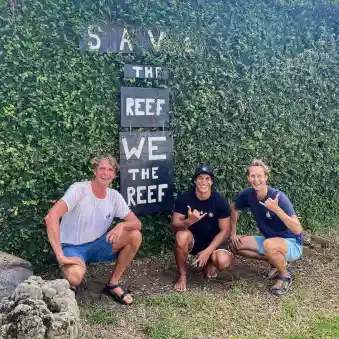
How did you start cruising?
Both of us had busy jobs, but didn’t feel like we were contributing enough to a better society and healthier environment. We suspected that there were many inspiring people working for a better world, so wanted to learn from them and spread their stories. To get to them sustainably, sailing was the best way. Ivar was already living on a sailboat. For him sailing was already the preferred and most sustainable way of getting somewhere. It took Floris some getting used to, but he soon saw the advantages: you reach the most beautiful places, you always have your home with you and you travel on wind energy. A long sailing trip soon became a common goal. When we planned our trip, we agreed that sustainability would be our main theme. We are both conscious of the privileged situation we are in. At the same time, the precarious state of our natural world and the increasing social inequality make us feel concerned. We are convinced that change is needed to ensure that future generations can live in harmony on a healthy planet. When visiting a foreign country, you always learn from how other people do things. We saw an opportunity: if we collect innovative examples and share them with as many people as possible, we can do our part to speed up the transition to a sustainable and just society. We believe that sharing positive examples will motivate people to change their habits. That’s how we came up with the idea for Sailors for Sustainability. After years of renovations and preparations, we left Amsterdam in June 2016.
Describe what sort of cruisers you are:
We are liveaboards. While Ivar is the captain at sea, Floris is the “land captain”. We sail double handed, but are regularly assisted by trainees. See also our website https://sailorsforsustainability.nl/supportus/ for more information on our trainee program.
What type of cruising are you doing currently?
The plan is to circumnavigate the world. We have a route in mind that takes us back to Amsterdam eventually, using the prevailing winds. We research which sustainable solutions are successfully working in practice in the countries that we pass or that are close to our route and visit them. Timing is open-ended. However, to complete our journey around the world, we expect to need a few more years.
What were the key reasons you selected your current boat?
Robust and easy to repair (steel), beauty, excellent for ocean-sailing, price (she was in bad shape, that’s why she was affordable)
What other boats have you owned? None
What changes have you made to your current boat?
We renovated and replaced almost everything over the course of 12 years, except the hull and masts! When Ivar bought Lucipara 2 in 2004, he thought he’d renovate his new-found love in five years. It proved to be wishful thinking: in the end only the hull and masts were left unaltered. We made the boat more sustainable by improving the insulation, adding a wind turbine (superwind), solar panel, wood stove and watermaker. And we added comfort, space and light.
Most useful equipment fitted, and reasons for this choice:
Our wind vane “Herbie” (windpilot), because it does all the steering for us, never gets tired, requires very little maintenance and uses no electricity. This video explains how our windvane works, and how happy we are with it – http://j.mp/SfSHerbie
Equipment regrets, or things you would do differently:
We have left our social life in the Netherlands and we sometimes miss that. That’s certainly the case during happy moments of family and friends, such as births and birthdays, but it is also difficult not to be there for them in painful times, for example in case of illness or death. During the trip there are occasional lows when something breaks down on the boat. Although we have worked hard to get the boat in good shape, things do break. That is part of the experience and we are getting used to it more and more. And we keep getting better at repairing things.
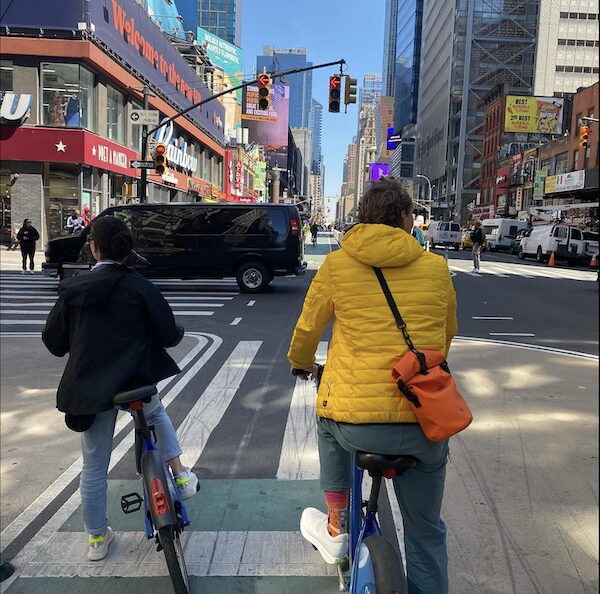

List the countries you have cruised:
Netherlands, Germany, Denmark, Sweden, Norway, Scotland, Isle of Man, England, France, Spain, Portugal, Italy, Greece, Albania, Croatia, Malta, Tunisia, Morocco, Cabo Verde, Brazil, Uruguay.
We left Amsterdam in June 2016 and visited sustainable solutions in Northern, Western, and Southern Europe during the first two years of our journey. After visiting Northern Africa we crossed the Atlantic (Cabo Verde to Brazil) and then sailed south. So far we visited more than 30 sustainable solutions and met inspiring people that work towards an environmentally sound and socially just society.
Future cruising plans:
Argentina, Chile, Pacific Islands, New Zealand, Australia, then Asia. We may head towards Japan and Alaska , or sail through the Indian Ocean to South Africa instead. We’ll see how we feel by the time we reach Australia.
List the oceans/seas you have crossed:
North Sea, Baltic Sea, Irish Sea, Bay of Biscay, Mediterranean Sea, North and South Atlantic Ocean
Approximate sea miles: About 15,000.
Scariest day on the water:
We were at anchor and were alerted by an engine temperature alarm. To our surprise, the engine wasn’t overheated, but was too cold. Upon inspection we discovered that the boat was full of water, all the way to the floorboards. We feared that we were sinking when the water level didn’t seem to go down despite our pumping like crazy. The coast guard came with a big pump and towed us to the shore. The water was pumped out and the boat stayed dry. A broken clamp had caused cooling water to enter the boat and the automatic bilge pump’s wiring was disconnected. Small damages that caused great stress…
The full story is here: bit.ly/SfSNiceLeGrazie
Best cruising moment:
Arriving at the paradise-like island of Fernando de Noronha after successfully crossing the Atlantic and being greeted by the local spinner dolphin population. For both of us it was the first ocean passage, so to arrive safe and sound, and at such a magnificent place, was very rewarding.
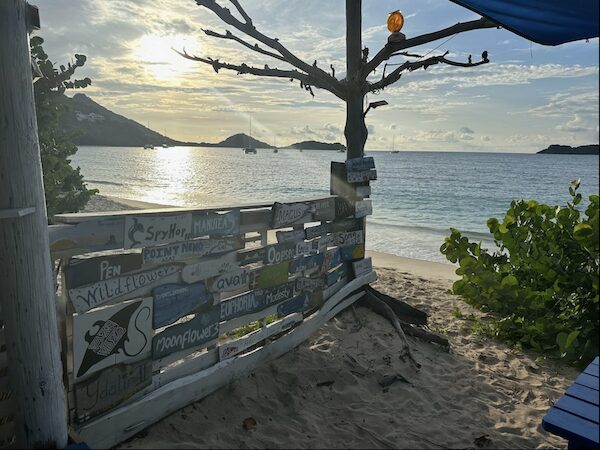

Favourite cruising area and why:
The Mediterranean Sea, because it’s so varied, there is always a beautiful and calm anchorage not too far away, the food is delicious, Porto Azzuro – Elbathere’s culture everywhere and the weather is good enough for sailing year-round.
Favourite anchorage:
Porto Azzurro, Elba, Italy, because the area is beautiful, the anchorage is well-protected, the town is close (with tasty ice-cream), and you can swim in the bay.
Favourite cruising apps: Navionics, Windy, Navily, Iridium Go (in combination with PredictWind Offshore)
Favourite cruising websites: Noonsite!
Favourite cruising books: Reeds Almanac – we wish they had such a comprehensive pilot for all parts of the world.
What advice or message would you want to pass on to anyone new to cruising or thinking about casting off the dock lines?
1) Go!
2) Don’t rush
3) Wait for good wind
4) Share your tips with noonsite
Why cruise? What is it that inspires you to keep cruising?
Our mission is to inspire as many people as possible with positive examples and call them to sustainable action. We see that not only change is needed, but also possible in many areas. The challenges we face call for “all hands on deck”. With our sailing trip around the world we want to contribute to a better world for our generation and the generations after us.
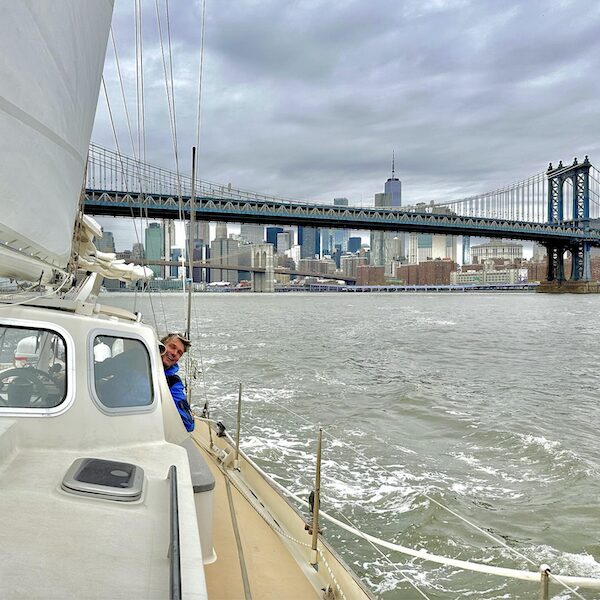

………………………………………………………………………………………………………………………………………
Circumnavigation Stats:
Miles: 56,000 nautical miles
Time: Eight-year sailing trip around the world – documented 67 sustainable solutions
Articles for Noonsite:
- USA: EU Sailors Report on Entry and Exit Formalities (Jun, 2024)
- USA, Baltimore: Bridge Collapse Closes Port for Commercial and Recreational Vessels (Mar, 2024)
- INSIGHTS: Coral Gardening Gives Reefs a Helping Hand (Jul, 2021)
- INSIGHTS: Top 10 Tips to Cruise More Sustainably (Nov, 2020)
- South Pacific: Sailing the Society Islands during Difficult Times (Sep, 2020)
- Argentina: Clearance and Prefectura Experiences (Jul, 2019)
- Other Reports for Noonsite from Sailors for Sustainability
Related to the following Cruising Resources: Circumnavigation, Environment, Portrait of a Cruiser

